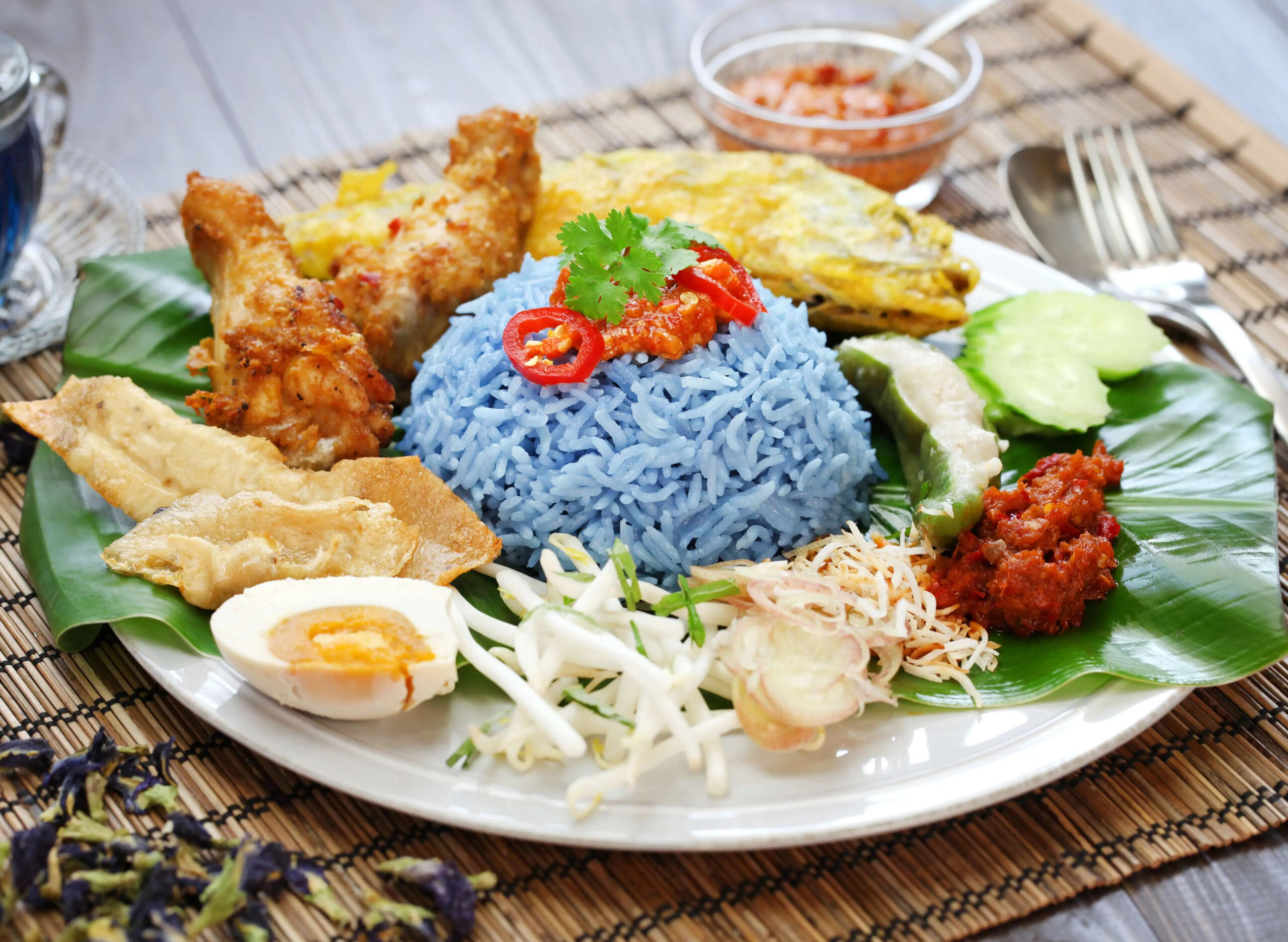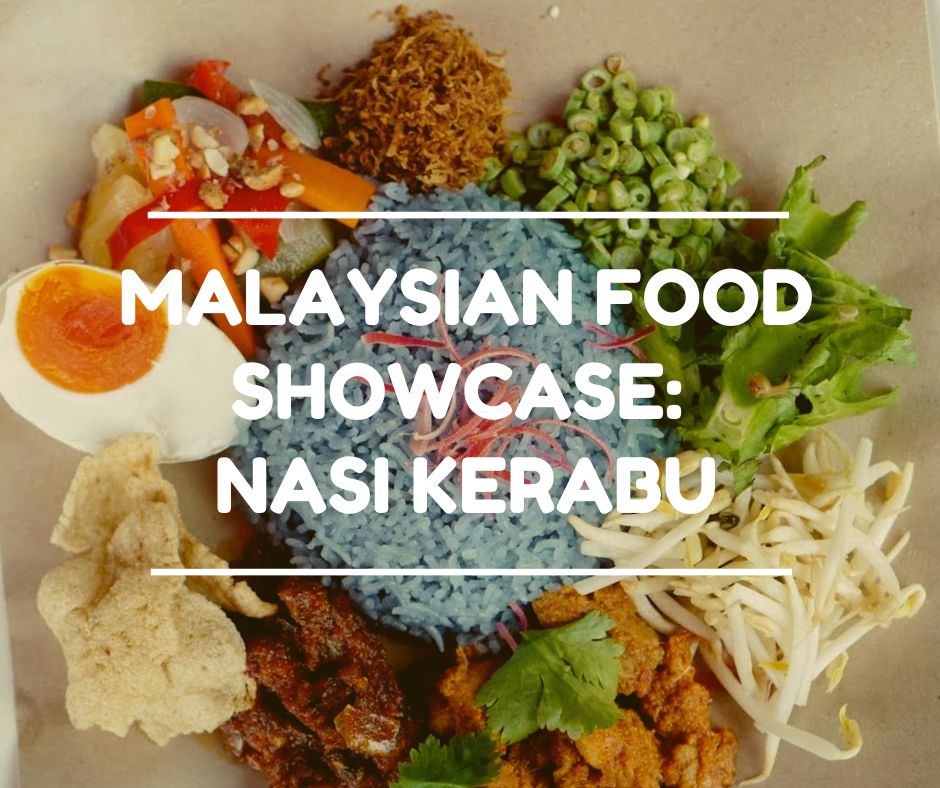Nasi Kerabu: The Vibrant Blue Rice Medley from Kelantan
Nasi Kerabu is a traditional Malay dish that is particularly popular in the states of Kelantan and Terengganu in Malaysia. It is a rice-based dish characterised by its unique blue colour, which is achieved by cooking the rice with the extract of butterfly pea flowers (or by using artificial colouring for convenience).
The dish typically consists of blue rice served with an array of fresh vegetables and herbs. The vegetables often include bean sprouts, long beans, cucumbers, cabbages, and herbs like daun kesum (Vietnamese mint) and daun kadok (betel leaf). These vegetables are finely shredded or sliced and are usually served raw or lightly blanched.
In addition to the vegetables, Nasi Kerabu is accompanied by various condiments and side dishes. Common choices include salted fish, salted egg, grilled meat (such as chicken or beef), or fried chicken. The condiments used in Nasi Kerabu are an essential part of the dish and can vary depending on personal preference and regional variations. Budu, a fermented fish sauce, is a popular condiment in Kelantan and is often used to add a savoury and salty flavour to the dish. Coconut fish flakes, known as kerisik ikan, are another common condiment that adds a rich and aromatic taste.
Nasi Kerabu has a distinctive flavour profile with hints of herbs, spices, and the umami taste of the condiments used. It is known for its fresh and vibrant presentation, making it not only a delicious dish but also visually appealing.
The history of Nasi Kerabu dates back to the 15th century, originating in Kelantan. It is closely associated with the Kelantanese Peranakan community, which is a blend of Chinese and Malay cultures. Over time, Nasi Kerabu has gained popularity and can now be found throughout Malaysia, both in street stalls and Malay restaurants.
The dish has also garnered influence from Thai cuisine due to historical ties and intermarriage between the Hokkien Chinese and Thai communities in Kelantan. Although there are similarities with Thai rice dishes like khao jam or khao yum, Nasi Kerabu stands out with its own unique combination of ingredients, flavours, and presentation. Nowadays, it is also common to find Nasi Kerabu prepared with plain white rice, yellow-coloured rice (cooked using turmeric) and also black-coloured rice (cooked using na-dam leaves).






1 Response
[…] of Kelantan, holds a special place in their hearts, particularly when paired with the beloved Nasi Kerabu. Etok (or sometimes called Etak) is a river bivalve mollusks, scientifically known as Corbiculacea. […]